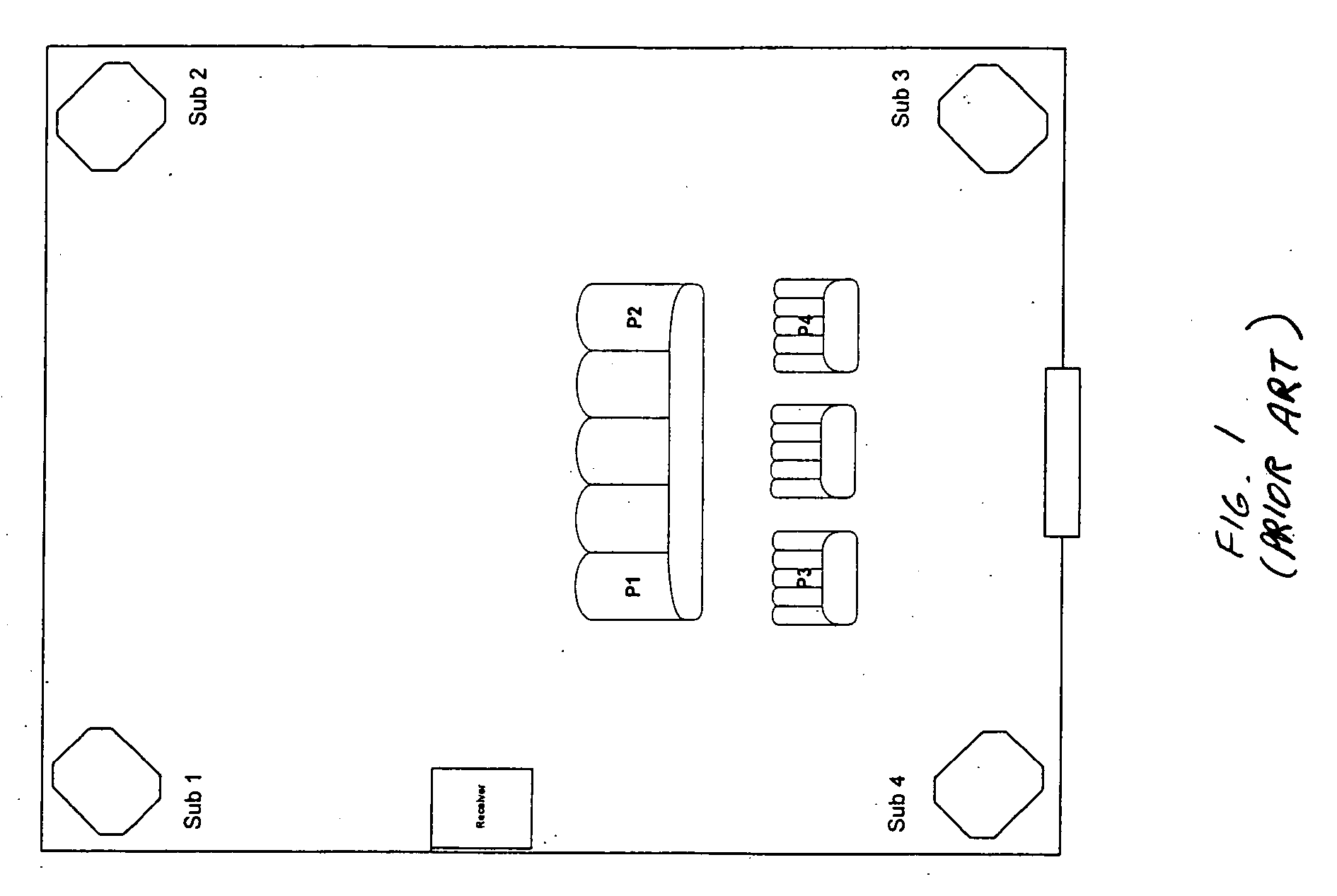Equalization system to improve the quality of bass sounds within a listening area
a technology of equalization system and bass sound, which is applied in the field of improving the quality of bass sound within the listening area, can solve the problems of adversely affecting the low-frequency performance of the sound system, affecting the listening experience, and affecting the sound quality of other locations, so as to achieve the effect of improving the bass respons
- Summary
- Abstract
- Description
- Claims
- Application Information
AI Technical Summary
Benefits of technology
Problems solved by technology
Method used
Image
Examples
Embodiment Construction
[0039]FIG. 3 shows a block diagram illustrating an equalization system 300 in accordance with this invention, designed to achieve an improved bass response from one or more subwoofers within a room that is flat across a predetermined low-frequency range within a desired listening area of the room. The equalization system 300 may be used to equalize the frequency responses for a variety of rooms where each room has its own unique characteristics. For instance, a room may have one or more of the following characteristics: (1) one or more walls of the room may be open; (2) a ceiling or walls of the room may have an arc; (3) drapes may cover one or more walls of the room; (4) the floor of the room may be uneven; (5) there may be one or more subwoofers in the room; (6) location of each of the subwoofers may be positioned anywhere in the room, and etc. As such, the equalization system 300, as described in detail below, may be used to equalize the frequency responses for any room.
[0040] F...
PUM
 Login to View More
Login to View More Abstract
Description
Claims
Application Information
 Login to View More
Login to View More - R&D
- Intellectual Property
- Life Sciences
- Materials
- Tech Scout
- Unparalleled Data Quality
- Higher Quality Content
- 60% Fewer Hallucinations
Browse by: Latest US Patents, China's latest patents, Technical Efficacy Thesaurus, Application Domain, Technology Topic, Popular Technical Reports.
© 2025 PatSnap. All rights reserved.Legal|Privacy policy|Modern Slavery Act Transparency Statement|Sitemap|About US| Contact US: help@patsnap.com



